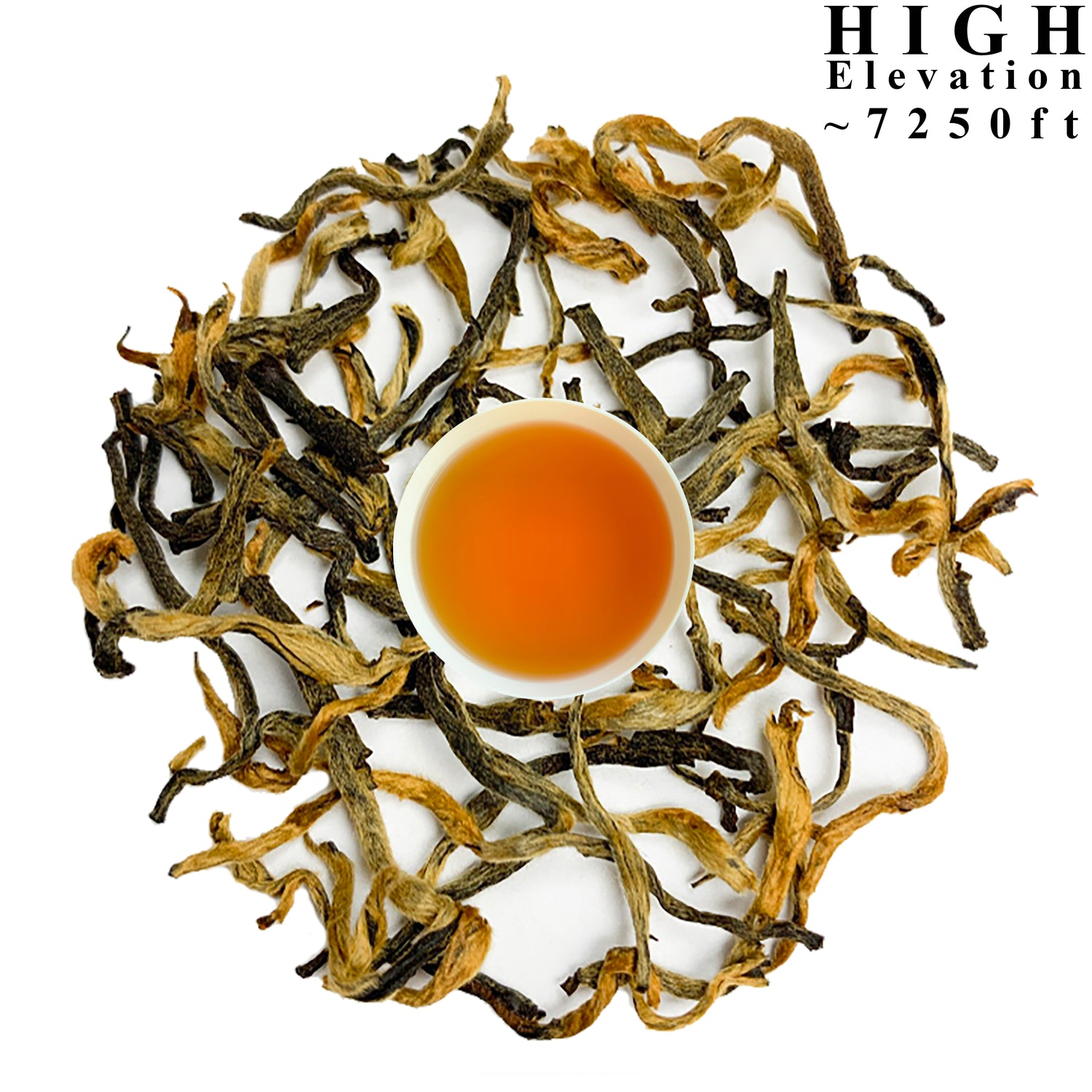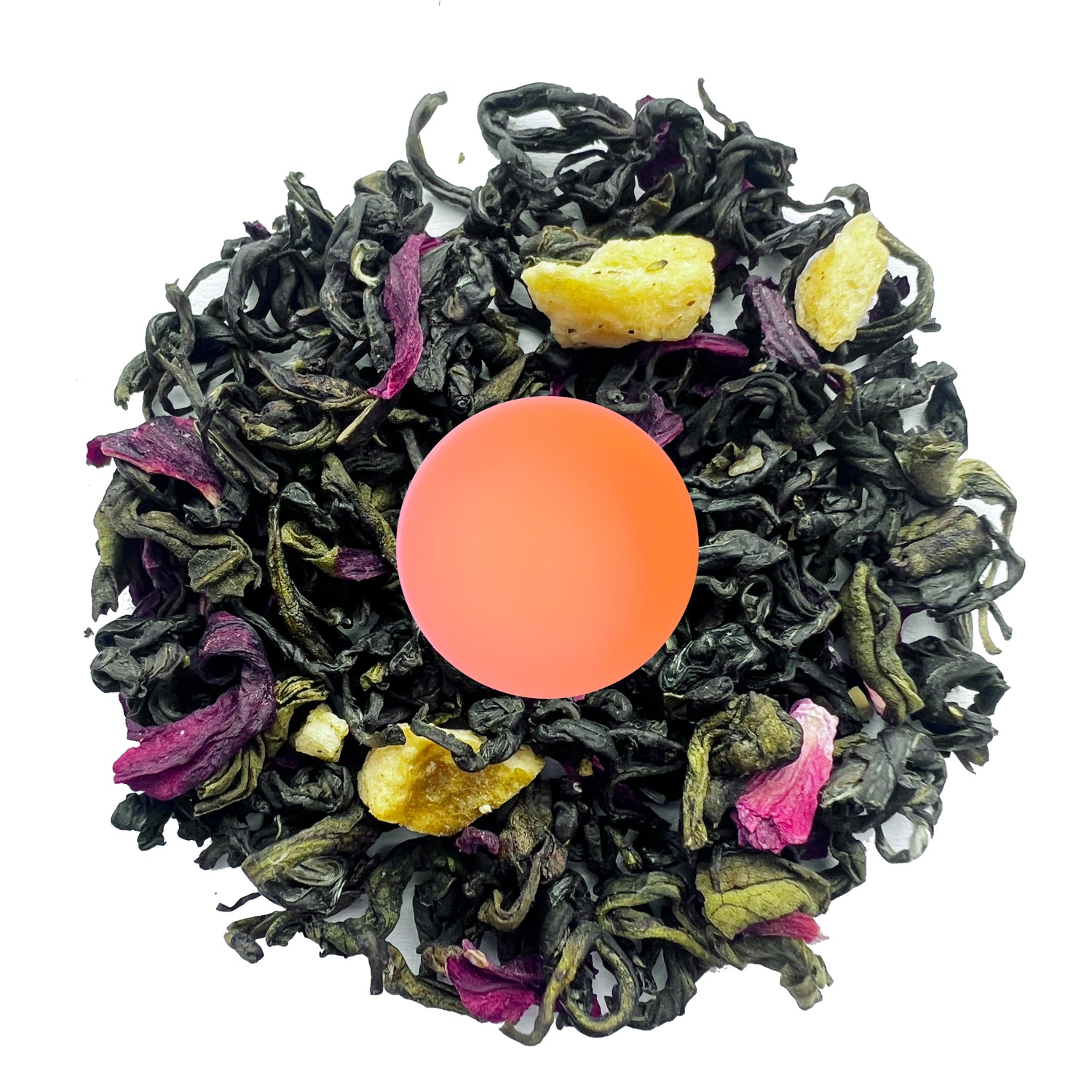
Types of Nepali Tea: Facts About Nepalese Tea
Tea has traditionally been cultivated in Nepal for centuries and throughout the ages, the nation has established a name for itself as a producer of premium teas. Nepalese people love tea. When you get a chance to visit Nepal, you will find groups of people chatting away at squares, and little tea shops, enjoying every sip of delicious Nepali tea. Despite the popularity of tea, people are still unaware of the varieties that Nepali tea has to offer. This guide is dedicated to those who are new to Nepali tea and don’t know the types of Nepali tea available in the market. Keep reading.
History of Nepali Tea
Parts of the great Tea Horse Road of the late 6th Century, a trade route used by Tea traders from Yunnan China for transportation of their teas, went through Tibet, Myanmar, Bhutan leading to Nepal, India, and further. Nepal as an ancient nation of that era played its role in the development of the tea trade by becoming a consumer and trader of Chinese teas.
Nepal is a relatively small country, but it has a long history of Tea cultivation.
Mountain tribes such as Limbu, Rai, etc. who thrived in the Eastern mountains of Nepal, cultivated the tea crop for their domestic use throughout their history.
Modern Organized Plantation however started when Ilam Tea Estate was established in the Hills of Ilam District in 1863. The first official Tea plants were grown in Nepal from the saplings the Chinese Emperor gifted the then Prime Minister of Nepal, Jung Bahadur Rana. As of today, Nepal consists of more than 85 plantations where superior and aromatic tea is produced in large quantities.
In the beginning, Nepali teas were compensating for the quality of Darjeeling tea. However, in 1978, Ilam set up its factories for tea manufacturing jumpstarting a stagnant industry. By 1982 Nepal started producing its fine quality tea. At the time, then King of Nepal His Majesty Birendra Bir Bikram Shah Dev declared five districts Ilam, Jhapa, Panchthar, Dhankuta, and Terhathum as the ‘Nepal Tea Zones.’ Except for Jhapa, all other districts are in the hilly region of Nepal.
Modern Nepali Tea Industry
In the early 20th century, independent organizations took steps to refine Nepali tea and improve its quality, which ultimately created a commercially viable tea industry in Nepal. Nepali Tea was introduced to the world much after Darjeeling tea, however, due to its color, fusion, taste, and aroma, Nepali tea is considered the finest in the world today. More than 16,000 hectares of the hilly mountain regions in Nepal are covered with tea gardens.
Types of Nepali Tea
Nepal produces a variety of teas, and while all Nepali teas are made from the Camellia Sinensis plant, the variation comes with the way they are processed.
There are dozens of varieties of Nepali tea but below we have listed the most popular ones.
Oolong Tea
Oolong tea is a traditional orthodox Nepali tea, and it is made by passing tea leaves through a special oxidation process. Oxidation is a process in which the enzymes locked inside the tea leaves come in contact with the oxygen, turning the leaves darker in color. The process is similar to the browning of an Apple when we cut it open and leave it in the open air. The longer it reacts with the oxygen the higher its oxidation level is.
Tea leaves are plucked carefully, hand-rolled, and left for oxidation to create an aromatic taste in the tea. The leaves are left alone in the open air until their oxidation level reaches between 50-70%. Oolong tea leaves are pretty brownish, and we can feel a fruity and earthy taste as we take a sip of brewed oolong tea.
How to brew Oolong tea?
There are many ways to prepare Oolong tea, but the following brewing methods might give you the best taste possible.
Smooth Refreshing
- Get 10 oz of filtered water and heat until it boils.
- Add 1 teaspoon of oolong tea leaves into a clear glass or in a Steeping cup.
- Pour the boiling water into the glass or steeping cup containing tea leaves.
- Let it steep for 3 to 5 minutes until its color is deep golden.
- Strain and enjoy your oolong tea.
- Repeat for the second infusion, adding 1 min extra steeping time.
Robust High Energy
- Get 10 oz of filtered water and boil it.
- Add 1.5 to 2 teaspoons of oolong tea leaves into a clear glass or in a Steeping cup.
- Pour the boiling water into the glass or steeping cup containing tea leaves.
- Let it steep for 5 minutes until its color is rusty golden.
- Strain and enjoy your oolong tea.
- Repeat for the second infusion, adding 1 min extra steeping time.
Facts about Oolong Tea
- Oolong tea is great for losing weight as it contains antioxidants and lipid-lowering properties.
- Oolong tea is also popularly known as “Wu Long Tea”, this is due to the two methods of Romanizing the Mandarin characters.
- Oolong tea is prepared from the same plant i.e. Camellia Sinensis.
- It can remove the free radicals from your body as it contains polyphenolic compounds.
- The cultivation of this tea is most common in two countries, China and Taiwan. Rare Himalayan Nepal Oolong Tea is a different experience altogether, which is thick and brothy, with very low astringency.
Black Tea
Ilam black tea is robust Nepali Black tea widely produced in the Eastern Himalayas of Nepal. It is mainly used as a breakfast tea. It can be served by itself or with milk. Black tea is a fully oxidized tea. Its oxidation level ranges between 80-100%. Ilam Black Tea is one of the most consumed Nepali teas that competes with Darjeeling Black Tea. When brewed, it releases reddish-golden color, providing a flavorful and well-balanced cup of tea.
How to brew black tea?
There are various ways to prepare black tea, we recommend the following.
Robust Refreshing
- Get 10 oz filtered water and heat it until it boils.
- Add 1 teaspoon of tea leaves to your Steeping cup.
- Pour the boiling water into the steeping cup.
- Let it steep for 3-5 minutes.
- Wait until it turns deep golden.
- Enjoy your black tea.
- Repeat for the second infusion.
Robust Energy High
- Get 10 oz filtered water and heat it until it boils.
- Add 1.5 to 2 teaspoons of tea leaves into your Steeping cup.
- Pour the boiling water into the steeping cup.
- Let it steep for 5 minutes.
- Wait until it turns rusty golden.
- Enjoy your robust-energy high black tea.
- Repeat for the second infusion.
Facts about Black Tea
- Black tea contains theaflavins that eliminate abnormal cells in a body before they create damage or transform into cancerous cells.
- According to research, the consumption of black tea lowers the chance of heart stroke.
- Black tea contains major bioactive compounds like polyphenols and helps to reduce the chance of diabetes.
Green Tea
Green tea is a tea that doesn’t go through the oxidation process. Its leaves are slightly steamed which gives it an aromatic taste. Green tea undergoes less processing than Black and Oolong Tea. Unlike Black tea and oolong tea, green tea is protected from being oxidized and no withering process is needed to create this tea.
Most people have green tea as a healthy beverage. Green tea is really helpful when it comes to losing weight and detoxing your body.
How to brew green tea?
You can brew green tea in many different ways but these two are the most common ones.
Mild Smooth
- Get 10 oz of filtered water and boil it.
- Remove the water from boiling and let it sit for 2 min, letting it cool down to about 165 F.
- Add 1 teaspoon of green tea leaves into a glass or in a Steeping cup.
- Pour the hot water into the glass or the steeping cup.
- Let it steep for 3 minutes.
- Wait until it turns light golden with a subtle greenish hue.
- Enjoy every sip of it.
- Repeat for a second infusion.
High Energy
- Get 10 oz filtered water and boil it.
- Remove the water from boiling and let it sit for 2 min, letting it cool down to about 165 F.
- Add 1.5 to 2 teaspoons of leaves into a glass or a Steeping cup.
- Pour the hot water into the clear glass or steeping cup containing tea buds.
- Let it steep for 3 minutes.
- Wait until it turns bright golden.
- Enjoy every sip of it.
- Repeat for multiple infusions, add 1 min to steep each time.
Facts about Green Tea
- Contains bioactive compounds like polyphenols and catechin called epigallocatechin-3-gallate (EGCG) that help to minimize the rate of cell damage.
- It contains caffeine and theanine known as a stimulant that helps to boost brain function.
- By boosting metabolic rate, green tea burns the fat in the body.
- It contains antioxidant elements, resulting in a lower risk of cancer.
- It helps to maintain the health of the brain as you age.
Golden Tips Tea
Golden Tips tea is the highest-grade Black tea that is produced at high altitudes (7000 ft- 7500 ft) in the Mid-eastern Himalayas of Nepal. It is called “Golden tips tea” because young tea buds are early harvested. The tips are goldish and when steeped, they release a golden amber hue with a smooth velvety texture. Golden Tips tea has a nutty taste close to popcorn and roasted peanuts.
How to brew golden tips tea?
We recommend two brewing methods for Golden Tips tea for the best results.
Mild Smooth
- Get 10 oz of filtered water and bring it to a boil.
- Add 1 teaspoon of Golden Tips tea into a glass or in a Steeping cup.
- Pour the boiling water into the glass or the steeping cup.
- Let it steep for 4 minutes until its color turns light golden.
- Strain and enjoy your golden tips tea.
- Repeat for the second infusion.
Smooth Energizing
- Get 10 oz of filtered water and boil it.
- Add 1.5 teaspoons of Golden Tips tea into a glass or in a Steeping cup.
- Pour the boiling water into the glass or steeping cup.
- Let it steep for 5-6 minutes until the color is dark golden.
- Strain and enjoy your golden tips tea.
- Repeat for the second infusion.
Facts about Golden Tips Tea
- Golden Tips tea contains a high amount of flavonoids that promote heart health.
- Regularly drinking this tea beverage ensures the good health of bacteria that improve gut health.
- Due to the high presence of polyphenols, the regular consumption of Golden tea might prevent cancer.
Silver Tips Tea
Unlike black, green, or oolong tea, which is made from tea leaves, Silver tips tea is made from single-origin unopened tea buds. They are handpicked and processed into the highest-grade Tea. Best known for its long and velvety silvery buds, Silver Tips tea is processed into the highest-grade White tea.
After a long winter dormancy in the tea mountains of Nepal, as soon as spring blooms, tender tea buds with a pointed needle appear on the tea plants, which are plucked and then immediately dried out into white tea, to make silver-tips tea. This tea is one of the rarest Nepali tea because it can only be harvested once a year.
How to brew silver tips tea?
There are various ways to brew silver tips tea, but these three methods are the common ones.
Milder Soothing
- Get 8oz filtered water and heat it until it boils.
- Remove it from the stove and let it cool down to 80C-90C or 180F-190F. It may take about 2 minutes.
- Add 1 teaspoon of silver-tip tea to a cup.
- Pour the water into the glass containing the tea buds.
- Watch how beautifully the buds sink to the bottom one by one after a few minutes.
- Let it steep for 10 minutes.
- The color turns faint golden. Enjoy every sip of it.
Mild Calming
- Get 8 oz filtered water and boil it.
- Add about 1.5 teaspoons of silver-tip tea into a cup.
- Pour the boiling water into the cup containing tea buds.
- Let it steep for 12 minutes.
- Watch how beautifully the buds sink to the bottom one by one after a few minutes.
- The color turns bright golden. Enjoy every sip of it.
Facts about Silver Tips Tea
- Highest-grade Silver Tips teas are plucked only on the night of the full moon.
- It is believed that the sun's rays affect its aura, its aroma, so a very special tea leaf is picked before dawn.
Nepali tea is starting to gain popularity globally as a unique specialty tea. Mentioned above are only a few types of Nepali tea.
FAQs
What are some traditional Nepalese dishes that pair well with Nepali tea?
Nepali tea complements various traditional dishes. A popular choice is Dal Bhat, Nepal's national dish, which pairs wonderfully with the robust flavors of iced Nepalese black tea. Lentil soup, another staple, also goes well with these teas.
Can Nepali tea be used in any unique recipes?
Absolutely! Nepali tea can be creatively used in recipes. For instance, incorporating brewed black or green Nepali tea into a rice flour or white flour batter can add a unique twist to traditional Nepalese dishes like Sel Roti.
How does Nepali tea differ from Chinese cuisine in terms of tea culture?
Nepali tea, distinct in its processing and flavor profiles, differs notably from Chinese teas. While Chinese cuisines often incorporate a wide range of teas, Nepali tea culture primarily focuses on varieties like black, and milk tea, each offering a unique taste experience that reflects the rich Nepalese terrain.
What are some popular side dishes in Nepalese cuisine to enjoy with tea?
Popular side dishes in Nepalese cuisine that go well with tea include spicy vegetable curries, momo (dumplings), and puffed rice. These dishes complement the aromatic and diverse flavors of Nepali teas.
How has Nepali tea influenced the country's culinary landscape?
Nepali tea has significantly influenced the country's culinary landscape. It's not just a beverage but an integral part of daily life, often enjoyed with meals and influencing the creation of tea-infused dishes that blend traditional Nepalese flavors with the aromatic qualities of tea.
Buy the Finest Loose-Leaf Teas from the Himalayas
Danfe Tea brings you the finest loose-leaf teas in the Himalayas. With robust flavors and many health benefits, we invite you to try our high-quality black teas. These teas are available in 2.5-3.5 oz or 1 lb variants. We also offer monthly subscriptions to these products.










